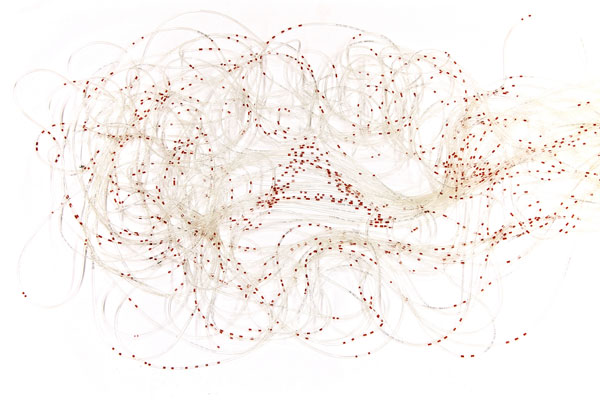
Allowing us to witness the emergency of order, by unfolding patterns which
we can understand, from an apparent chaotic-looking system, bit.flow's
artifact is more or less accidentally but openly perceptible. Working as a
physical version of a binary memory system, bit.flow's stored
data, running simultaneously in different tubes, can only be read in a
specific position at a specific time even if the information is already
travelling through the tubes for a long time. This required positioning on
behalf of the viewer is hinting on how we apprehend and are able to
perceive the information, through learning and adaptation processes.
Julius Popp's works develop at the interface of art and science. His highly
artificial, technical patterns and experimental structures often have a
disturbing power. Popp engineers objects that take their departure from an
initial sketch by the artist and proceed to invent themselves, making the
artist an observer.



